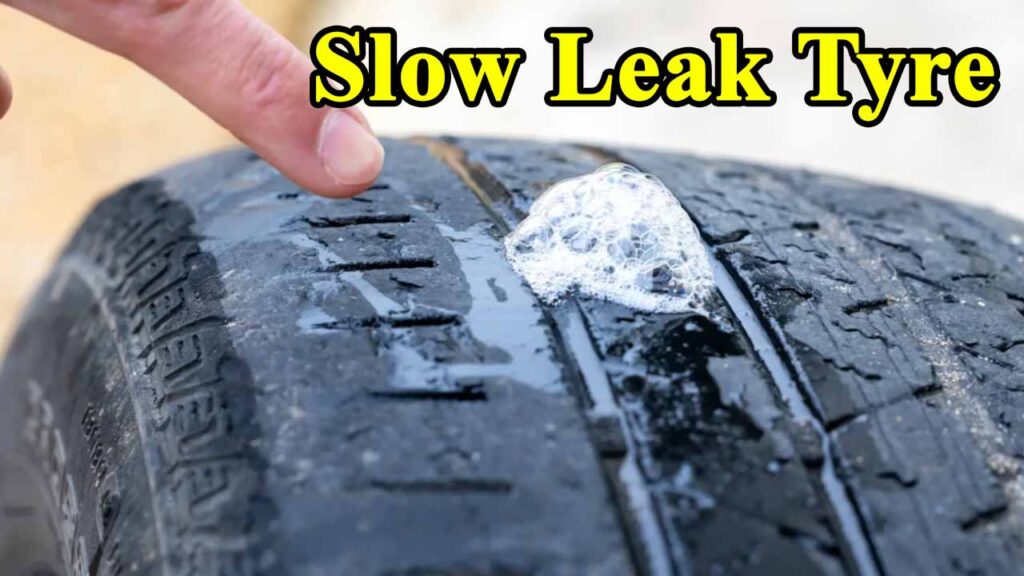For avid mountain bikers, the name “Crossmax” instantly conjures images of lightweight, high-performance wheels synonymous with cross-country and trail riding. Mavic, the French cycling component giant, has long been a titan in the world of bicycle wheels, and their Crossmax line is arguably their most recognizable mountain bike offering. But when it comes to the tires bearing the Crossmax name, the answer to “who makes them?” isn’t as straightforward as you might think. Let’s delve into the fascinating world of bicycle manufacturing, explore Mavic’s legacy, and uncover the true origins of Crossmax tires.
Mavic’s Legacy: A History of Innovation and Expertise
To truly understand Crossmax tires, we must first understand Mavic. Founded in Lyon, France, way back in 1889 by Charles Idoux and Lucien Chanel (hence, Manufacture d’Articles Vélocipédiques Idoux et Chanel – MAVIC), the company’s roots are deeply entwined with the history of cycling. From pioneering the first aluminum rims in the 1930s to introducing neutral support in professional races, Mavic has consistently pushed the boundaries of cycling technology.
My own introduction to Mavic came during my early days of competitive mountain biking. The first truly “nice” wheelset I ever saved up for was a pair of Mavic Crossmax SLs. I remember the excitement of unboxing them, the distinctive yellow decals, and the satisfying click of the freehub. They weren’t just wheels; they were a statement, a promise of speed and reliability on my local trails here in the Midwest. That experience cemented Mavic’s reputation in my mind as a brand of genuine quality and performance.
How To Reset Tire Pressure Light
While Mavic is renowned for its wheels – from the iconic Ksyriums on the road to the rugged Deemax for downhill – their foray into tires, particularly under the Crossmax umbrella, has seen various partnerships over the years. This is a common practice in the cycling industry, where specialized expertise often leads to collaborations for optimal product development.
The True Manufacturer: A Tale of Partnerships
Here’s where the plot thickens. While the “Crossmax” branding belongs unequivocally to Mavic, the actual manufacturing of many Mavic-branded tires has often been outsourced to other tire specialists.
For a significant period, Hutchinson, another well-respected French tire manufacturer, has been widely recognized as the primary producer of Mavic’s mountain bike tires, including those carrying the Crossmax name. This partnership makes a lot of sense: Hutchinson has a deep heritage in rubber compounding and tire construction, particularly for off-road applications, boasting decades of expertise in producing high-performance bicycle tires.
Think of it like this: Ford designs and engineers its cars, but specific components like transmissions or electronics might be manufactured by specialized third-party suppliers who are leaders in those particular fields. Similarly, Mavic brings its wheel system expertise, design philosophy, and performance requirements to the table, while Hutchinson contributes its unparalleled knowledge of rubber chemistry, tread design, and casing construction. This synergy allows both companies to focus on their core strengths, ultimately delivering a better product to the rider.
It’s important to note that the tire industry is dynamic, and partnerships can evolve. While Hutchinson has been a long-standing partner, it’s not uncommon for brands like Mavic to explore collaborations with other manufacturers based on specific product needs, technological advancements, or supply chain considerations. For instance, some sources might mention Horizon Tire as a manufacturer for certain Crossmax automobile tires, but this is a completely separate product line and not related to Mavic’s bicycle tires. For the mountain bike world, the connection to Hutchinson is the most relevant.
What Makes a Crossmax Tire “Crossmax”? The Mavic Influence
Even if another company manufactures the rubber, Mavic’s influence on Crossmax tires is undeniable. Here’s how their expertise shapes the final product:
- Integrated Wheel-Tire Systems (WTS): Mavic has been a strong proponent of the “wheel-tire system” concept. This means they design their tires to work seamlessly with their rims, optimizing fit, tubeless performance (especially with their UST Tubeless Ready technology), and overall ride characteristics. They don’t just put a tire on a rim; they engineer them to function as a unified unit.
- Performance Specifications: Mavic dictates the performance parameters for Crossmax tires – what kind of grip, rolling resistance, durability, and weight they need to achieve for their intended use (cross-country, trail). They work closely with the manufacturing partner to develop specific rubber compounds (like Mavic’s X-mix Quest compound mentioned in some older tire models) and tread patterns that align with the Crossmax philosophy of speed and efficiency.
- Quality Control: While manufacturing might be outsourced, Mavic maintains stringent quality control standards to ensure the tires meet their demanding benchmarks. This means rigorous testing, both in laboratories and on the trails, to guarantee consistency and reliability.
- Tubeless Technology: Mavic was a pioneer in UST (Universal Standard for Tubeless) technology. Crossmax tires are typically designed with this in mind, offering easy tubeless setup and reliable air retention, a crucial aspect for modern mountain biking to reduce punctures and improve ride comfort.
BMW X5 Tire Sizes Across Generations: A Detailed Look
The Value Proposition of Crossmax Tires
Mavic Crossmax tires, especially when part of a complete wheel-tire system, aim to offer a strong value proposition for riders:
- Performance: They are designed for specific disciplines, with tread patterns and compounds optimized for speed, grip, and control. For a local cross-country race here in Wisconsin, where the trails can be a mix of hardpack and loose over hard, a tire like the Crossmax Charge or Roam would offer a great balance of rolling speed and cornering confidence.
- Durability: While not always the absolute burliest options on the market, Crossmax tires are built to withstand the rigors of aggressive riding, often featuring reinforced casings (like Guard 2 dual-ply) to enhance puncture resistance.
- User Experience: The focus on tubeless compatibility and easy installation enhances the user experience. As someone who’s spent countless hours wrestling with stubborn tires, the promise of an easy tubeless setup is a huge plus!
- Integration: For those running Mavic wheels, the integrated design of Crossmax tires often means a more dialed-in and predictable ride.
Price: Mavic Crossmax tires generally fall into the mid-to-high price range for mountain bike tires, typically retailing between $50 and $80, depending on the model, size, and specific technology. While not the cheapest on the market, their performance, durability, and integration benefits often justify the cost for serious riders.
Originality and Uniqueness in the Tire Market
In a crowded tire market, what makes Crossmax tires stand out?
- System Integration: Their strongest unique selling proposition is the intended synergy with Mavic wheels. This holistic approach to wheel and tire design is a hallmark of Mavic’s engineering philosophy.
- Focus on XC/Trail Performance: Crossmax tires are not trying to be everything to everyone. They are specifically tuned for cross-country and trail riding, offering a balance of low rolling resistance for climbing and sufficient grip for technical descents.
- Mavic’s Heritage: The brand name itself carries weight. Mavic has been at the forefront of cycling innovation for over a century, and that legacy of expertise and quality is inherently linked to their tire offerings.
Personal Touch: My Crossmax Journey
I remember a specific ride at Kettle Moraine State Forest in Wisconsin, on a particularly rooty and rocky section of trail known as “The Three Towers.” I was running an older set of Mavic Crossmax ST wheels with Mavic’s own tires (I believe they were the Crossmax Roam at the time). The combination felt incredibly precise. The tires hooked up beautifully on the loose climbs, and despite some sketchy off-camber roots, they held their line with a predictability that truly boosted my confidence. It wasn’t the lightest setup, but it was robust and reliable, allowing me to focus on the ride, not on my equipment. That’s the kind of experience Mavic, and by extension, Crossmax tires, aim to deliver – a feeling of unwavering support and performance that empowers you to ride your best.
Conclusion: A Collaborative Masterpiece
So, who makes Crossmax tires? While the brand name belongs to Mavic, the actual manufacturing is typically a collaborative effort, most notably with tire specialists like Hutchinson. This partnership allows Mavic to leverage the deep expertise of tire production while still imprinting their signature design philosophy and performance standards onto the product.
For riders, this means Crossmax tires offer a carefully engineered solution designed to work in harmony with Mavic’s renowned wheels, providing a balanced blend of speed, grip, and durability for cross-country and trail riding. It’s a testament to how specialized collaborations can bring some of the best cycling technology to our local trails, enriching our riding experiences and pushing the boundaries of what’s possible.
Frequently Asked Questions (FAQ)
Q1: Are Mavic Crossmax tires good for all types of mountain biking? A1: Mavic Crossmax tires are primarily designed for cross-country (XC) and light trail riding. They prioritize rolling efficiency and predictable grip. For more aggressive enduro or downhill riding, Mavic offers other tire models like the Deemax range, which feature more aggressive tread patterns and heavier casings.
Q2: Can I use Crossmax tires on non-Mavic wheels? A2: Absolutely! While Crossmax tires are designed to integrate seamlessly with Mavic wheels, they are standard mountain bike tires and will work perfectly well on any compatible mountain bike wheelset (of the correct diameter and width) that supports tubeless setup.
Q3: What does “UST Tubeless Ready” mean? A3: UST (Universal Standard for Tubeless) is a system pioneered by Mavic that aims for a consistent and reliable tubeless tire and rim interface. “UST Tubeless Ready” means the tire can be set up tubeless with sealant and a compatible rim, offering benefits like reduced rolling resistance, improved grip, and fewer pinch flats compared to running inner tubes.
Q4: How often should I replace my Crossmax tires? A4: Tire lifespan varies greatly depending on riding style, terrain, and rubber compound. Generally, you should replace your tires when the tread knobs are significantly worn down, especially the center knobs, or when you notice excessive cuts, tears, or casing damage. Regularly inspect your tires for signs of wear and tear.
Q5: What are the main advantages of using a Mavic Crossmax wheel-tire system? A5: The main advantage is the optimized synergy between the rim and tire. This can lead to easier tubeless setup, better air retention, and a more predictable and compliant ride due to the engineered fit and interaction between the two components. It’s about a holistic approach to performance.




